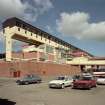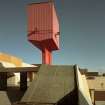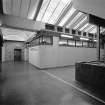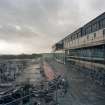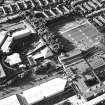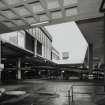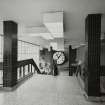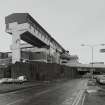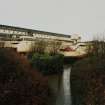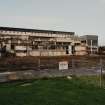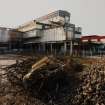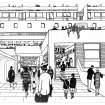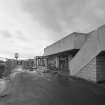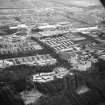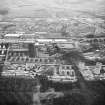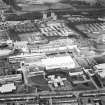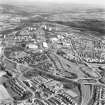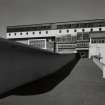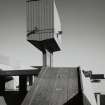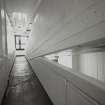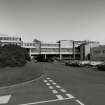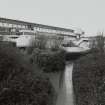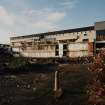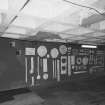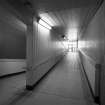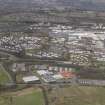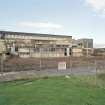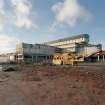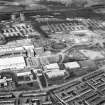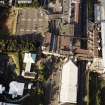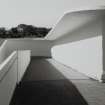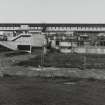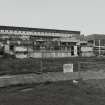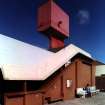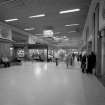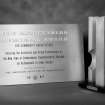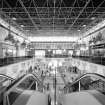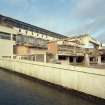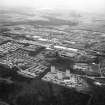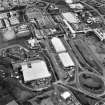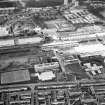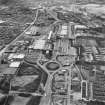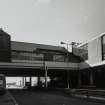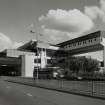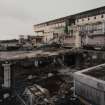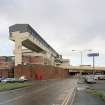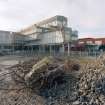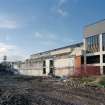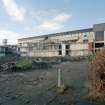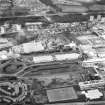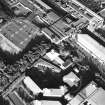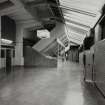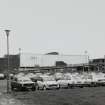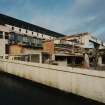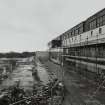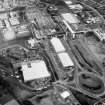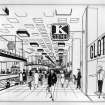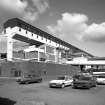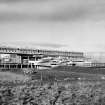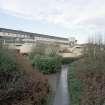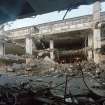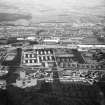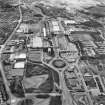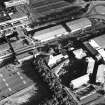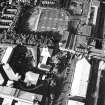Cumbernauld, Cumbernauld Town Centre, General
Bus Station (20th Century), Flat(S) (20th Century), Municipal Building (20th Century), Shopping Centre (20th Century)
Site Name Cumbernauld, Cumbernauld Town Centre, General
Classification Bus Station (20th Century), Flat(S) (20th Century), Municipal Building (20th Century), Shopping Centre (20th Century)
Alternative Name(s) Town Centre
Canmore ID 70557
Site Number NS77SE 47
NGR NS 75805 74489
NGR Description Centred on NS 75805 74489
Datum OSGB36 - NGR
Permalink http://canmore.org.uk/site/70557
First 100 images shown. See the Collections panel (below) for a link to all digital images.
- Council North Lanarkshire
- Parish Cumbernauld
- Former Region Strathclyde
- Former District Cumbernauld And Kilsyth
- Former County Dunbartonshire
Built from the 1960s, Cumbernauld New Town accommodated 70,000 residents in dense low-rise housing and tower blocks. The Town Centre, a huge concrete 'megastructure', was designed to hold Cumbernauld's retail, administrative, cultural and recreational facilities on nine levels, accessed via an on-site bus station and a motorway running underneath. The bold architecture of the Town Centre received international acclaim.
Information from RCAHMS (SC) 17 August 2007
Glendinning, M, MacInnes, R and MacKechnie, A, 1996
NS77SE 47 centred on NS 75805 74489
Construction (1960)
Photographic Survey (1990)
Publication Account (1997)
A massive multi-level, multi-function town-centre building set on an elevated ridge, straddling a dual-carriageway through road. One of the key monuments of postwar European architecture, and the most important postwar work in this country. Significant chiefly as the international exemplar of 'megastructural' planning - the conception, central to avant-garde 1950s/60s architecture, of single, agglomerative buildings containing multiple functions juxtaposed in a visually exciting manner with traffic routes. In a postwar context, the Centre is almost completely original as a conception - although possibly influenced, further back, by the multi-level imagery of Italian Futurism, or by Schindler's Lovell Beach House - and it was hailed by International Modern Movement historian Reyner Banham as 'the canonical megastructure'. More prosaically: it ws the world's first multi-level covered-in town centre. (Figs. 4.45, 4.46).
Information from 'Rebuilding Scotland: The Postwar Vision, 1945-75', (1997).










































































































